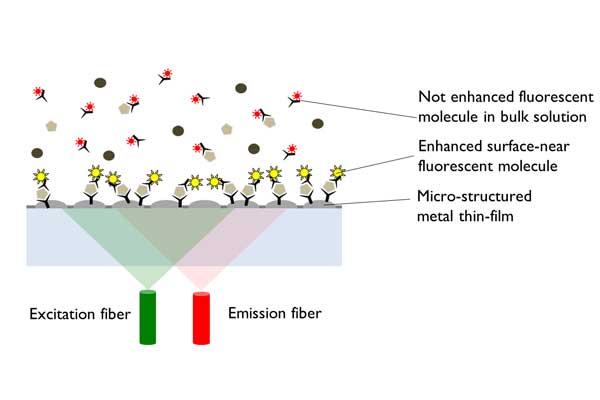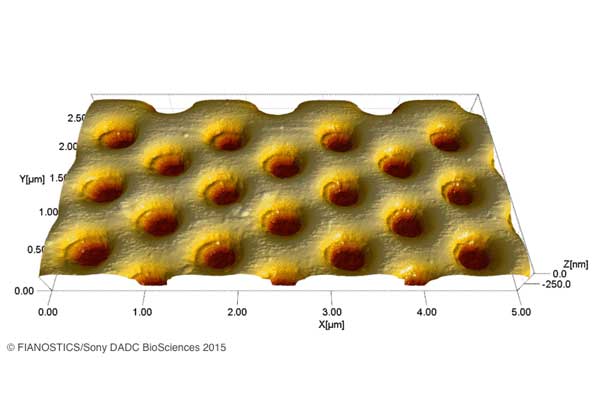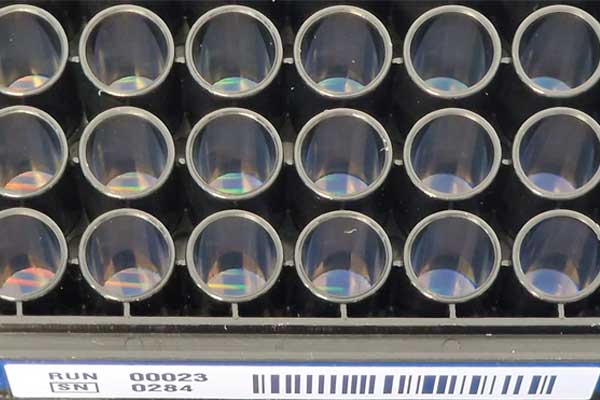Our technology
FIANOSTICS presents a completely new generation of fluorescence assays
developed and produced in Austria, patented worldwide

Metal-enhanced fluorescence
Metal Enhanced Fluorescence (MEF) offers the possibility to increase the analytical sensitivity of fluorescence detection based systems up to 100-fold. This uses the fact that exciting light interacts with the electrons of nano-metal structures and can thus generate very high electromagnetic fields (localised surface plasmons, LSPs). This is why such structures are also referred to as “plasmonic structures” and the combination of (e.g. polymer) carrier and structure as a “plasmonic substrate”. These LSPs now mean that the light yield of fluorescent molecules (e.g. fluorescence-labelled antibodies) can be increased more than 100-fold when bound to surfaces with suitable nano-metal structures.

The technology
Previous attempts to industrialise this technology in diagnostics have failed due to a lack of reproducibility of the nano-metal structures, incompatibility with standard diagnostic methods and the availability of suitable immunoassays.
FIANOSTICS has solved the problem of reproducibility by cooperating with Sony DADC BioSciences.
The technology is based on the know-how of Blue Ray Disc production, which is used to manufacture our plasmonic structures.
Sony DADC Biosciences was acquired by STRATEC in 2016; all technical facilities remain unchanged at the site in Anif, Salzburg.

100% compatibility with the 96-well MTP standard
Compatibility with standard laboratory methodology is ensured by the choice of format in which FIANOSTICS offers its immunoassays. In principle, the plasmonic structures developed can be used in all analytical formats (e.g. rapid tests, biosensors, microfluidic or lab-on-a-chip systems) where fluorescence is used. in which fluorescence is used. However, FIANOSTICS has opted for 100% compatibility with the 96 well microtitre plate format, as this is still widely used in clinical research and our assays can therefore be used on any commercially available fluorescence microtitre plate reader.
